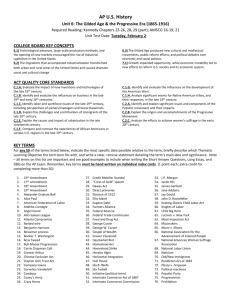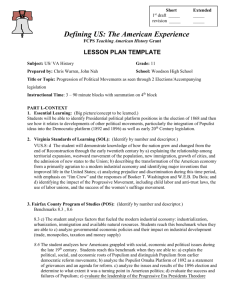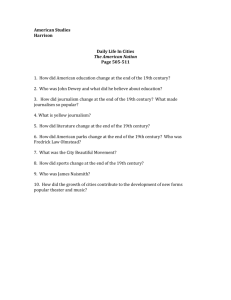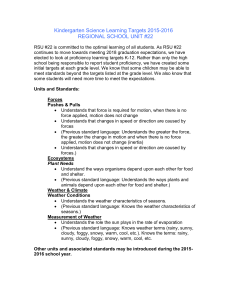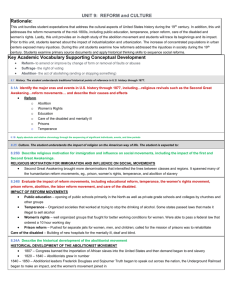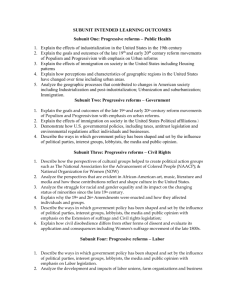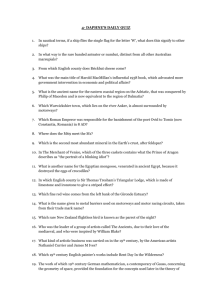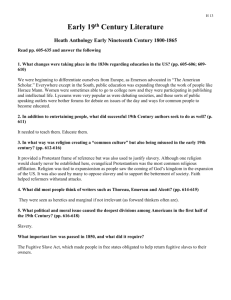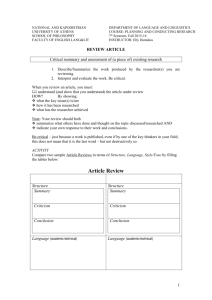US History Bundle 4 2014
advertisement
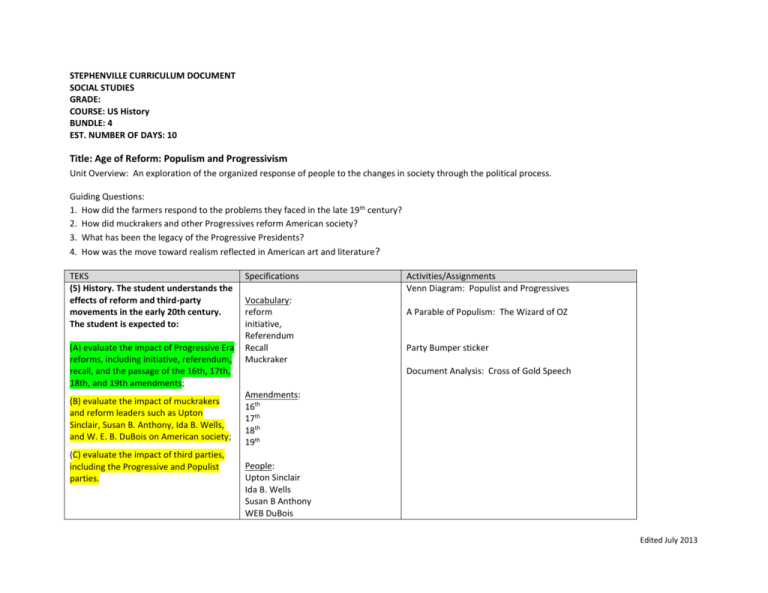
STEPHENVILLE CURRICULUM DOCUMENT SOCIAL STUDIES GRADE: COURSE: US History BUNDLE: 4 EST. NUMBER OF DAYS: 10 Title: Age of Reform: Populism and Progressivism Unit Overview: An exploration of the organized response of people to the changes in society through the political process. Guiding Questions: 1. How did the farmers respond to the problems they faced in the late 19 th century? 2. How did muckrakers and other Progressives reform American society? 3. What has been the legacy of the Progressive Presidents? 4. How was the move toward realism reflected in American art and literature? TEKS (5) History. The student understands the effects of reform and third-party movements in the early 20th century. The student is expected to: (A) evaluate the impact of Progressive Era reforms, including initiative, referendum, recall, and the passage of the 16th, 17th, 18th, and 19th amendments; (B) evaluate the impact of muckrakers and reform leaders such as Upton Sinclair, Susan B. Anthony, Ida B. Wells, and W. E. B. DuBois on American society; (C) evaluate the impact of third parties, including the Progressive and Populist parties. Specifications Vocabulary: reform initiative, Referendum Recall Muckraker Activities/Assignments Venn Diagram: Populist and Progressives A Parable of Populism: The Wizard of OZ Party Bumper sticker Document Analysis: Cross of Gold Speech Amendments: 16th 17th 18th 19th People: Upton Sinclair Ida B. Wells Susan B Anthony WEB DuBois Edited July 2013 William Jennings Bryan Theodore Roosevelt Robert LaFollette Jacob Riis Booker T. Washington Groups: Progressive Populist Bull Moose Party (3) History. The student understands the political, economic, and social changes in the United States from 1877 to 1898. The student is expected to: Legislation: Pendleton Act Terms: Populism Populist philanthropy (A) analyze political issues such as the beginnings of Populism; Philosophy: Social Gospel (B) analyze economic issues such as farm issues Groups The Grange Populist Party (C) analyze social issues affecting women, minorities, children, immigrants, urbanization, the Social Gospel, and philanthropy of industrialists (9) History. The student understands the impact of the American civil rights movement. The student is expected to: (A) trace the historical development of the civil rights movement in the 19th and 20th centuries, including the 13th, 14th, 15th, and 19th amendments Literature: Cross of Gold Speech Amendments: 13th 14th 15th 19th Student Created Newspaper Article: The Passage of either the 13th, 14th, 15th or 19th Amendment Terms: Civil Rights Edited July 2013 (14) Geography. The student understands the relationship between population growth and modernization on the physical environment. The student is expected to: (B) identify the roles of governmental entities and private citizens in managing the environment such as the establishment of the National Park System (15) Economics. The student understands domestic and foreign issues related to U.S. economic growth from the 1870s to 1920. The student is expected to: B. describe the changing relationship between the federal government and private business, including the costs and benefits of laissez-faire, anti-trust acts, the Interstate Commerce Act, and the Pure Food and Drug Act Groups/Agencies: National Park Service Map Skills: National Parks Vocabulary: laissez-faire Cause – Effect Charts: Legislation Legislation: Interstate Commerce Act Pure Food and Drug Act Clayton Anti-trust Act Policies: Square Deal New Freedom Agencies: Federal Reserve System Federal Trade Commission Supreme Court Cases: Munn v Illinois (23) Citizenship. The student understands efforts to expand the democratic process. The student is expected to: B) evaluate various means of achieving equality of political rights, including the Terms: Political rights Amendments: 19th Edited July 2013 19th (25) Culture. The student understands the relationship between the arts and the times during which they were created. The student is expected to: (A) describe how the characteristics and issues in U.S. history have been reflected in various genres of art, and literature; (26) Culture. The student understands how people from various groups contribute to our national identity. The student is expected to: Terms: Realism Individuals: Horatio Alger Mark Twain Kate Chopin James McnEIL Whistler Winslow Homer Thomas Eakins Jacob Riis Individuals: Jane Addams Frances Willard Creation of a “modern” Hull House. Compare/Contrast the actual Hull House with the “modern” Hull House. Ultimately answering the question, Has society cured her evils? (A) explain actions taken by people to expand economic opportunities and political rights, including those for racial, ethnic, and religious minorities as well as women, in American society; (d) identify the political, social, and economic contributions of women such as Frances Willard, Jane Addams Edited July 2013
